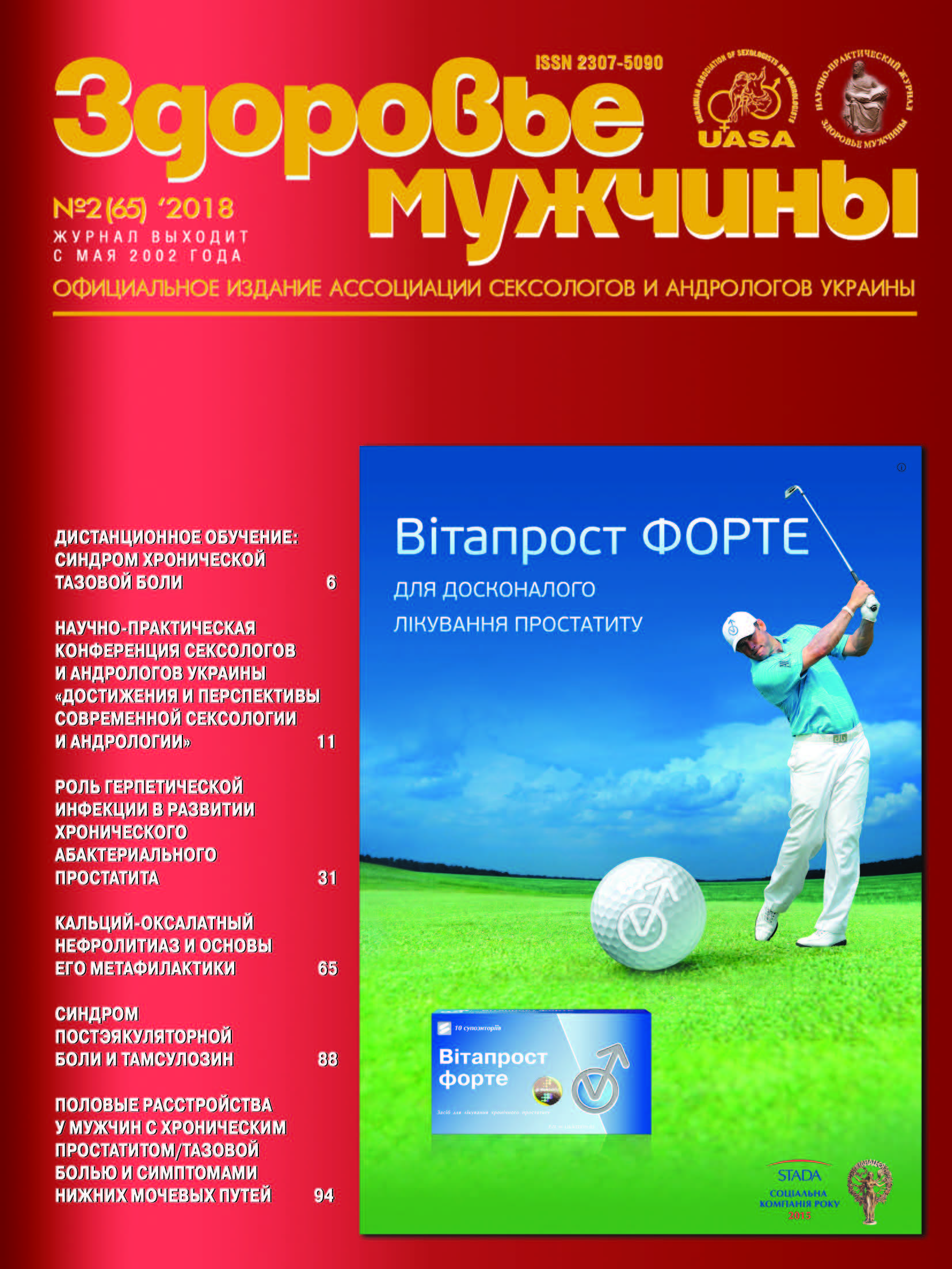Differential diagnosis of hypercalciuria and its role in the meta-prevention of calcium-oxalate nephrolithiasis
##plugins.themes.bootstrap3.article.main##
Abstract
The course of the most prevalent СaOx nephrolithiasis is accompanied by hypercrystallization, which is a high risk of relapsing CKD. For conducting scientifically grounded metaphilactics, it is necessary to distinguish the types of crystallization. We offer tests:
1. Low calcium test – used for hypercalciuria: within 3 days, the patient is assigned a low calcium diet followed by a determination of the level of calcium in the daily urine. Reducing the level of calcium to the norm indicates the presence of an absorbent form of hypercalciuria of type II. The reason is hyperabsorption of Ca from the intestine. In metaphilactics it is necessary to recommend to the patient a low calcium diet. In cases of lack of hypercalciuria, a diagnosis of hypercalciuria I type (non-absorption) is presented and is associated with a violation of enzymatic activity of the liver.
2. Calcium test (absorbent hyperoxaluria). Results of the study of daily urine on the content of stone-forming salts revealed in 25–30% of cases high levels of oxalurium (76––114 mg/l at a rate of 35–40 mg/l) with normal calciuria. Hyperoxaluria is an aggressive hypercrystallization factor, the level depends on the used diet, absorption in the intestine. The activity of absorption of oxalate depends on calcium, which binds the oxalate and translates into insoluble form, thus preventing absorption.
Calcium test: 3 calcium 0,5 gluconate (3 days). The control of daily urine – oxaluria comes to the upper limit of the norm (38-45 mg/l), we diagnose absorbent hyperoxaluria. In metaphysics of CaOx, nephrolithiasis with pronounced hyperoxaluria shows calcium diet.
3. Thiazide test – is conducted at elevated rates of parathormone with hypercalciuria and hyperuricemia. Within 5–7 days, thiazide diuretics are prescribed: hydrochlorothiazide 50 mg – 1 g/day, or chlorthalidone 50 mg 2 g/day, or chlorothiazide 4 mg 1 g/day, with the determination of the level of calcium in the blood and urine. With an increase in the level of hypercalcemia, we diagnose the resorptive form of hypercalciuria (primary hyperparathyroidism). Consultation of an endocrinologist on resection of parathyroid glands and further treatment.
Initiated differential diagnosis of hypercalciuria makes it possible to scientifically substantiate the antirecurring treatment of the most prevalent CaOx nephrolithiasis with high efficiency and a percentage (92–95%) of the non-recurring period during 5 years of metaphilactics.##plugins.themes.bootstrap3.article.details##

This work is licensed under a Creative Commons Attribution 4.0 International License.
Authors retain the copyright and grant the journal the first publication of original scientific articles under the Creative Commons Attribution 4.0 International License, which allows others to distribute work with acknowledgment of authorship and first publication in this journal.
References
Аполихин Ю.Г., Рапопорт Л.М., Руденко В.И. Ранняя диагностика риска развития кальций-оксалатной формы мочекаменной болезни // Урология. – 2017. – № 3. – С. 5–8. https://dx.doi.org/10.18565/urol.2017.3.5-8
Гаджиев Н.К. Метафилактика мочекаменной болезни: новый взгляд, современный подход, мобильная реализация // Урология. – 2017. – № 1. – С. 124–129. https://dx.doi.org/10.18565/urol.2017.1.124-129
Голованов С.А., Дрожжева В.В. Кристаллообразующая активность мочи при оксалатном уролитиазе // Экспериментальная и клиническая урология. – 2010. – № 2. – С. 24–29. Full text
Дзеранов Н.К. Клинико-лабораторные показатели у пациентов с мочекаменной болезнью при наличии и отсутствии первичного гиперпаратиреоза // Урология. – 2013. – № 6. – С. 14–18.
Жариков А.Ю. Механизмы формирования кристаллов при оксалатном нефролитиазе // Нефрология. – 2009. – № 4. – С. 37–50. https://doi.org/10.24884/1561-6274-2009-13-4-37-50
Кайдашев И.П. Эволюция понятия «метаболический синдром» и его современное значение // Укр.мед.часопис. – 2012. – № 2 (88) III–IV. – С. 12–14. Full text
Пасечников С.П., Сайдакова Н.О., Старцева Л.М. Сечокам’яна хвороба в аспекті госпіталізованої захворюванності // Урологія. – 2009. – № 3. – С. 5–16.
Черненко В.В., Желтовская Н.И., Штильвасер Л.М. Современные подходы к про- и метафилактике мочекаменной болезни // Врачебное сословие. – М., 2007. – № 3. – С. 20–23.
Park S, Pearle MS. Pathophysiology and management of calcium stouns. Urol Clin N Am. 2007; 31: 323–334. https://doi.org/10.1016/j.ucl.2007.04.009
Wein A. Campbell’s Urology. Philadelphia: Elsevier; 2008: 1411.





